Types of faucets: an overview of the main characteristics
The water supply system is necessarily equipped with special valves. This allows you to adjust the movement of water through the pipes and isolate emergency or areas to be replaced. This raises a fair question, which faucet is better for the plumbing in the apartment? We will try to answer it in this article.
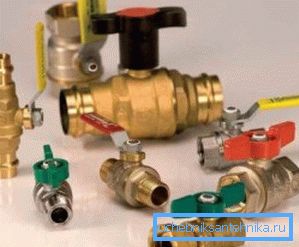
Locking elements
First of all, let us consider what types of water faucets can be according to the characteristics of the structure and functioning of their locking elements:
Conical
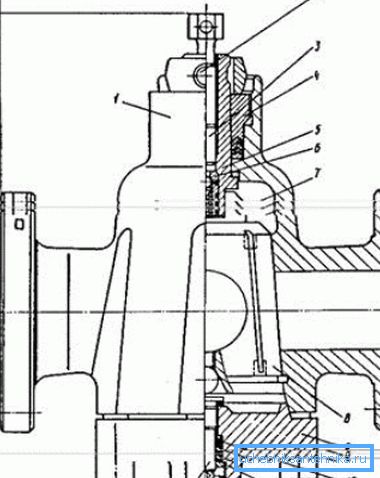
| Designation in the figure | Title |
| one | Body part |
| 2 | Handle |
| 3 | Push rod |
| four | First Brund |
| five | Spindle |
| 6 | Sealing sleeve |
| 7 | Clutch |
| eight | Cone-shaped cork |
| 9 | Cap |
| ten | Cuff |
| eleven | Second grund |
| 12 | Adjustment screw |
The closing and opening of the passage in such a crane is carried out by raising and lowering the cone-shaped stopper.
At one time, this design was very widespread, but today it is practically not used because of very significant shortcomings:
- The complexity of the use of their own hands. In order to open or close such a device, a large torque is required, even taking into account a small section.
- Quick wear. The cone tube, which is responsible for the efficiency of the product, too quickly loses the accuracy of its fitting to the walls of the body, which makes the valve unsuitable for further use.
- High enough price due to the complexity of processing the cone of the locking part, where the slightest mistake will lead to the absence of the necessary tightness.
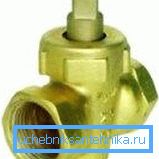
Cylindrical
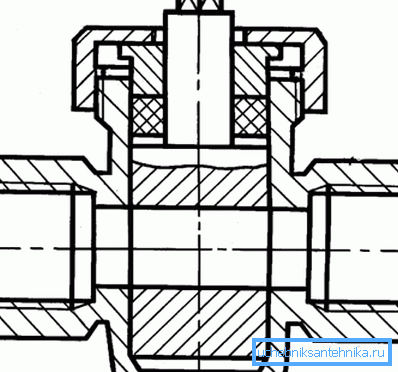
In this case, the locking function is performed by moving the cylinder, which provides the following differences from the previous version:
- Simplified manufacturing technology, which affects the reduction of the cost of the finished product.
- No full tightness.
Tip: it is recommended to use cylindrical taps not to shut off the water supply, but to regulate the intensity of the water flow in it. Then the lack of complete tightness will not play a significant role.
Ball
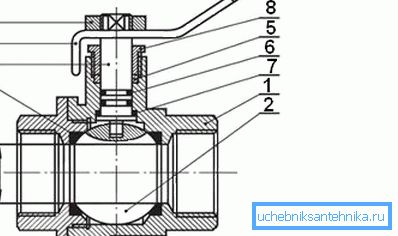
| Designation in the figure | Title |
| one | Body part |
| 2 | Locking ball |
| 3 | Landing rings |
| four | Connecting rod |
| five | Sealing gland |
| 6 | O-rings |
| 7 | Support washer |
| eight | Sleeve sleeve |
| 9 | Grip nut |
| ten | Handle |
Here, the principle of operation is fundamentally different from the previous variations of water taps. The locking element is a steel ball with a through hole in the middle.
By turning the handle connected to the ball by the rod, we thereby change its position:
- The hole is turned to the wall of the body of the crane, and the passage is completely blocked.
- The hole is turned to the inlet, resulting in a free passage for the movement of fluid.
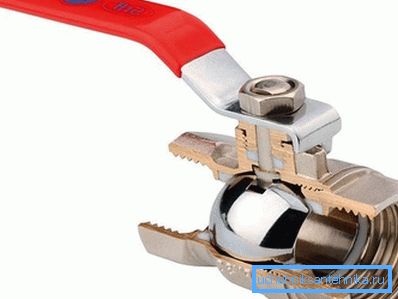
Such a device provides a ball valve with the following advantages, thanks to which it is today the leader in the market of sanitary valves and fittings:
- Affordable cost, which provides ease of manufacture.
- Elementary manual. It is enough to make a slight rotation of the handle 90 degrees to change the state from “open” to “closed” and vice versa.
Tip: It is not recommended to use the half-handled position, as it accelerates the wear of the bolt mechanism.
- Little weight, so there is almost no load on the pipeline.
- Reliability and durability. Such a rapid development, as in previous models, is absent.
- Visual appeal. The small size of the faucet itself makes it almost imperceptible against the background of pipe wiring, and the protruding handle in the form of a lever or butterfly looks quite aesthetically pleasing.

Thus, if we talk about the bolt mechanism, the ball models definitely win.
Manufacturing material
As for the material, you should pay attention to the two most frequently used options:
Brass

The traditional model has long been proven only with good sides:
- High resistance to mechanical stress. It withstands any careless handling with itself, endures the most extreme situations.

- High resistance to temperature extremes. Quietly withstands the pressure of hot water and does not deteriorate in the cold.
- Ease of installation. Threaded pipe connections are simple during installation and disassembly.
- No corrosive processes. Most other metals cannot boast of this property.
Plastic

Polypropylene is a relatively new material, which, despite this, has already managed to take a strong position in the plumbing industry.
Cranes made of plastic can boast the following advantages:
- Low cost. Plastic products are always cheaper, especially when compared with metal counterparts.
- Low weight. Due to this there is no pressure on the pipeline.
- Reliability of joints. The installation of the plastic pipe takes place with a special soldering iron, which guarantees complete tightness. Although it should be noted that there are classic models with threaded connections.
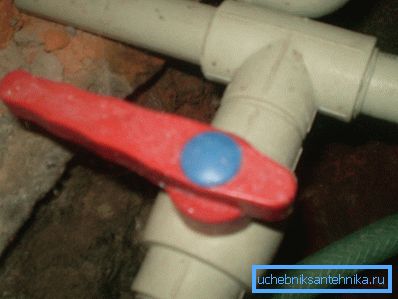
- Neutral to the aquatic environment - does not rust and does not change the taste of water.
- Durability. Polypropylene decays no earlier than 200 years.
But there are some difficulties that you need to know when choosing valves from this material:
- Low resistance to mechanical stress. Plastic may crack during intense physical exertion.
- Fear of high temperatures. Polypropylene begins to deform already at +95 degrees Celsius.
Therefore, depending on the conditions in which your water supply system will serve, choose which material will be more suitable.
Bandwidth
Cranes are also distinguished by their carrying capacity and are divided according to this into:
- Full bore. Pass 90-100% of the water flow passing through them.
- Standard. Pass 70-80% of the water flow passing through them.
- Non-passable. 40-50% of the water flow passing through them is passed through.
In addition, there are also possible branched three-way models that allow the connection of a pressure gauge to control the work of the entire system.
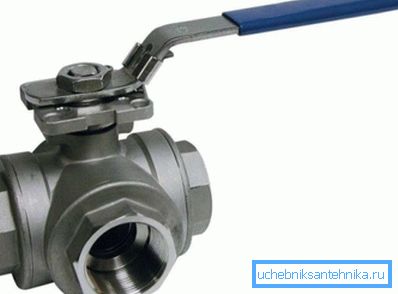
Conclusion
There are many types of faucets. The greatest difference lies in the principle of operation of their locking mechanism. It is also important to pay attention to the material of manufacture and throughput.
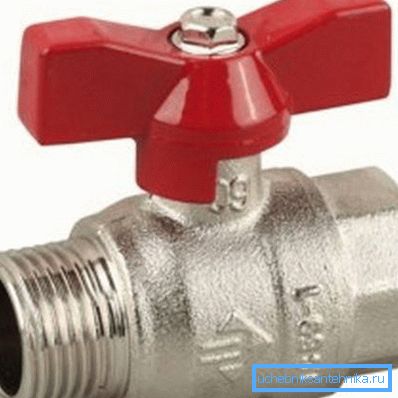
The video in this article will acquaint you with additional materials. Make a choice taking into account all the features of the future water supply system.